Barrage ammunition family IAI Harpy (Israel)
IAI Harpy
According to known data, the development of the first Israeli barracking ammunition started in the second half of the eighties. Developing the concepts of UAVs and cruise missiles, the company Israel Aerospace Industries came to the idea of a drone with its own warhead, capable of both reconnaissance and strike targets with a direct collision. Such proposals were implemented in the project Harpy ("Harpy"). It should be noted that this was one of the first projects of this kind in the world. In this regard, the authorship of the idea of a kamikaze drone is often attributed to Israel, although similar products were created in other countries.
The product Harpy was intended to combat enemy air defense, which determined its appearance. The UAV is built according to the “flying wing” scheme with an outstanding cylindrical fuselage. The UEL AR731 internal combustion engine, 37 hp, is placed in the tail section of the apparatus. with the pusher propeller. Provided for the installation of 32-kg high-explosive warhead. The Harpy was equipped with a passive radar homing head and an autopilot.
The length of the device reached 2,7 m, wing span - 2,1 m. Maximum weight - 125 kg. The propeller group provided speeds of up to 185 km / h with a range of 500 km. Takeoff was carried out from a ground launcher from a container.
IAI Harpy UAV had to take off from a catapult and, under the control of an autopilot, go out to a given area. There, the work included a radar GPS, whose task was to search for enemy air defense radars. Upon detection of the desired signal, the kamikaze drone was automatically guided to its source. Unlike the existing anti-radar missiles, the Harpy could stay in the right area for several hours and wait for the target signal to appear.
The first customer of the Harpy system was the Israel Defense Forces. In 1994, a contract appeared for the supply of such weapons To China. In the future, the drones entered service with several more foreign countries. In 2004, the Chinese contract became a topic of controversy internationally. The PRC Army ordered IAI to upgrade the remaining UAVs, which caused criticism from the United States. Israel, in response, recalled the origin of the project and noted the absence of American components in it. The Chinese "Harpies" have passed the required update.
IAI Harop
With all its positive qualities, the Harpy product had a serious problem. In the basic version it could only fight with the enemy’s radar, finding them on the radiated signal. In this regard, at the beginning of the two thousandth began the development of an upgraded version of the UAV called Hapry 2; later came the name IAI Harop. This time it was a full-fledged multipurpose drone with the function of a means of destruction.
For Harop, a new glider was developed with front horizontal tail, keels and another wing. Also changed the contours of the fuselage and overall dimensions. A gyro-stabilized platform with an optical-electronic reconnaissance system was placed under the enlarged nose of the apparatus. In the tail, between the keels, appeared engine cover with a pusher propeller. Electronics has undergone cardinal processing in order to obtain new functions. Inside the airframe placed a high-explosive charge of mass 23 kg.
The length of the "Harpy-2" was reduced to 2,5 m, while the wing span was brought to 3 m. Weight - 135 kg. The maximum speed remained at the level of the predecessor, but the range increased to 1000 km. Due to this, patrols of up to 6 hours were provided. Start is carried out from the transport and launch container using a solid fuel engine. It is envisaged to return the device to the base by the operator’s command. The operator of the complex could recall the drone even during a dive at the target.
Tests of the Harop product began in the 2003 year, and after a few years it entered service with the IDF. The company-developer published various data, but the first public display of the device took place only in 2009 year. By this time, orders from third countries had already been completed. So, India became the first foreign buyer. Currently, she is armed with more than a hundred drone, renamed the P-4.
In early April 2016, the first instances of the combat use of IAI Harop took place. During the next aggravation of the situation in Nagorno-Karabakh, the Azerbaijani army used kamikaze drones to attack the enemy’s transport and stationary objects. According to known data, the next successful attack using Harpy 2 occurred in May last year. With the help of such a device, the IDF destroyed the Syrian anti-aircraft complex "Pantsir-C 1". It should be recalled that during the attack the complex was not functioning and did not have ammunition.
IAI Harpy NG
In 2016, Israel Aerospace Industries for the first time presented a new project for the Harpy family. At one of the international exhibitions, materials on the Harpy NG (New Generation - “New Generation”) loot ammunition were shown. As follows from the published data, the development company made a “hybrid” of two previous aircraft with limited capabilities, but with rather high characteristics.
Harpy NG built on the basis of a glider UAV Harop. The main part of its units has been preserved, but some have been removed as unnecessary. Thus, the shape and equipment of the nose of the fuselage have changed. The “NG” product has no optoelectronic system, and the head compartment is placed under the passive radar GPS. The power plant remained the same, the avionics was redesigned according to the new tasks. Maximum unification with the previous sample allowed to keep dimensions and weight at the same level.
UAV-kamikaze is a means to deal with enemy radar stations. In fact, this is about transferring the functions of an older Harpy product to a more advanced Harop platform. This made it possible in a certain way to improve flight performance, and with it, combat effectiveness.
According to reports, IAI Harpy NG vehicles are in service only in Israel. Information about the procurement of such systems by foreign countries is not available. It is quite possible that in the future the “new generation” will find foreign customers - first of all, among the countries that have already mastered the previous models of the family.
IAI Mini Harpy
Just a few days ago, at the Aero India 2019 exhibition, the Israeli company IAI for the first time presented a new propelling ammunition of the Harpy family. The next development was called Mini Harpy, which reveals the main provisions of the project. In terms of its functions, the Mini-Harpy is no different from its predecessors. This uses a new airframe and updated equipment. Due to their use, it was possible to significantly reduce the size and weight of the product.
The new airframe is built according to the normal aerodynamic design and has a large elongation fuselage with a cross section close to rectangular. On the tapering tail of the apparatus is attached L-shaped tail. Top provides for the installation of a straight wing with ridges at the tips. In the transport position, the wing is laid along the fuselage, when exiting the WPC it is deployed to the working position. The power plant again uses the pushing screw.
In the new project, IAI combined all previously used surveillance tools. Mini Harpy carries an optical-electronic unit and an electronic reconnaissance system, which allows it to detect and attack any targets, including the enemy's radar. Control is exercised from the operator console, with some of the tasks assigned to the automation.
The kamikaze drone has a length and wingspan of about 2. Starting weight - 45 kg. The combat load is made in the form of a high-cumulative charge with a mass of 8 kg. The device is able to work distances up to 100 km from the operator, the fuel supply provides loitering for 2 hours.
The exact stage of work on the Mini Hapry is currently unknown. Some assumptions can be made on the basis of the fact that it is necessary to advertise the project so far with the help of a video with computer graphics and without actual filming. It should be noted that the commercial for the project has already made a lot of noise. The fact is that one of the objectives of the UAV from the video was a kind of radar, suspiciously similar to the component of the Russian anti-aircraft missile system. The painted Mini-Harpy easily coped with this goal, for which she immediately received the nickname C-300 Killer from the press.
Representatives of the company-developer talk about the high combat and commercial potential of the new locking ammunition. At the same time, they do not yet mention the real contracts for the supply of such products. Perhaps the drone IAI Mini Harpy is not yet ready for delivery, and its creators are only presenting their new development to potential buyers, wanting to interest them.
Large family
To date, Israel Aerospace Industries has developed and deployed four Harpy family munitions ammunition to the international weapons market. It should be noted that this line is not the only one in the IAI product catalog. There are several other developments of the same class that have certain differences from the “Harpies”. Apparently, the Israeli industry will not stop there and will continue to develop the idea of kamikaze drones.
Of great interest are the ways of development of the Harpy family, the outcome of which was the current state of affairs. The first sample of the family in its essence was a special type of anti-radar missile. Unlike other products of a similar purpose, the IAI Harpy UAV could patrol the area and wait for the target to appear and then attack it. Subsequently, the idea of patrol was developed, and full-fledged reconnaissance-strike systems appeared. The last sample of the family is capable of reconnaissance using various methods. Thus, for several decades, the Harpy line has come a long way and now includes a number of samples with different characteristics and capabilities.
Back in the early nineties, the first product of the family was brought to the market, and foreign orders soon appeared. In the future, foreign states acquired new models of the family. Now IAI expects orders for new weapons.
The steady emergence of contracts and the interest of new buyers demonstrate the high commercial potential of both the Israeli “Harpies” and the entire direction of locking ammunition. The facts of successful combat use of kamikaze drones are fueling the interest of potential buyers, both in Israeli products and in the developments of other countries. In addition, the Harpy family shows the commercial prospects of such systems, which leads to the start of foreign projects.
Israel is considered one of the creators of the concept of barracking ammunition, and it was the Israeli project IAI Harpy that was the first product of this kind to come into service and brought to the international market. Israel Aerospace Industries continues to work on this topic and presents new samples, including those from the Harpy family. The latest development of this kind was first shown just a few days ago.
On the materials of the sites:
http://iai.co.il/
https://armyrecognition.com/
http://globalsecurity.org/
https://flightglobal.com/
https://janes.com/
- Ryabov Kirill
- IAI / iai.co.il, Wikimedia Commons
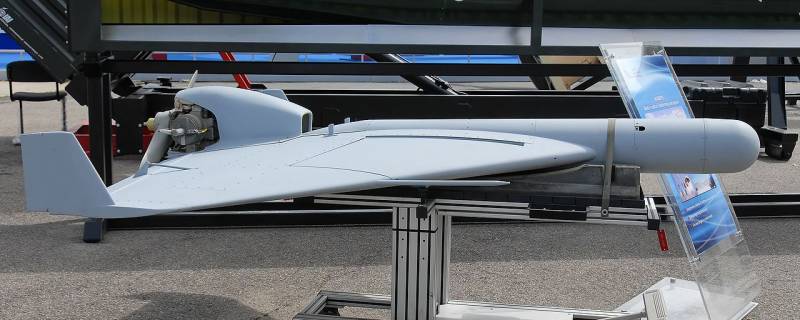
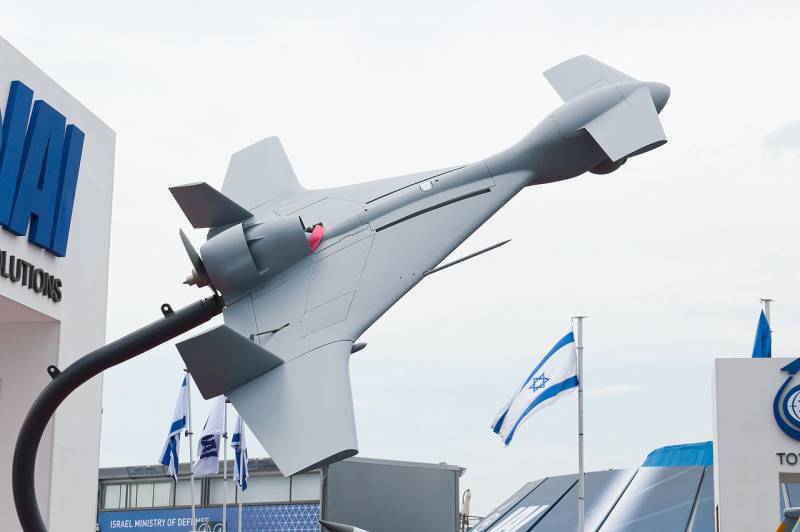
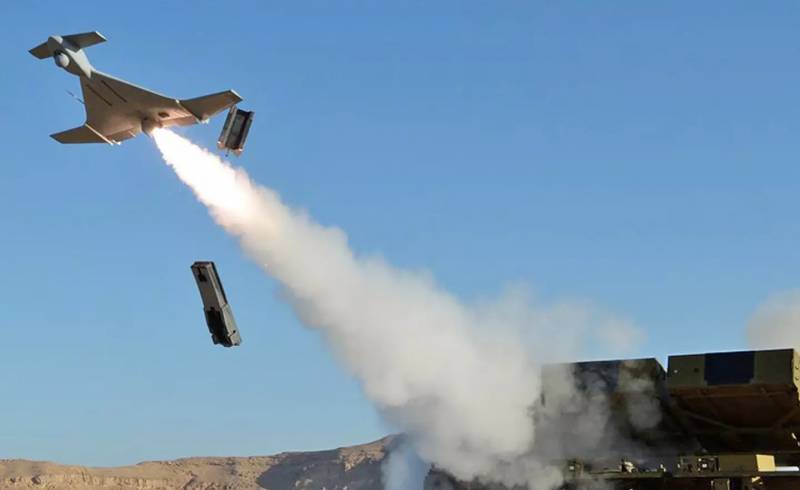
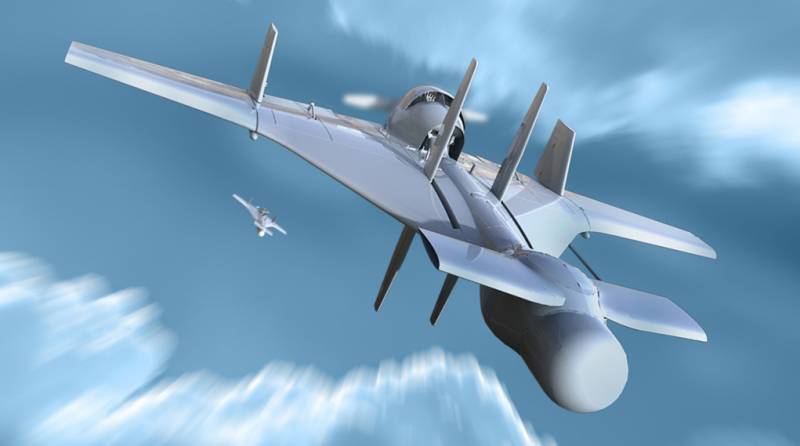
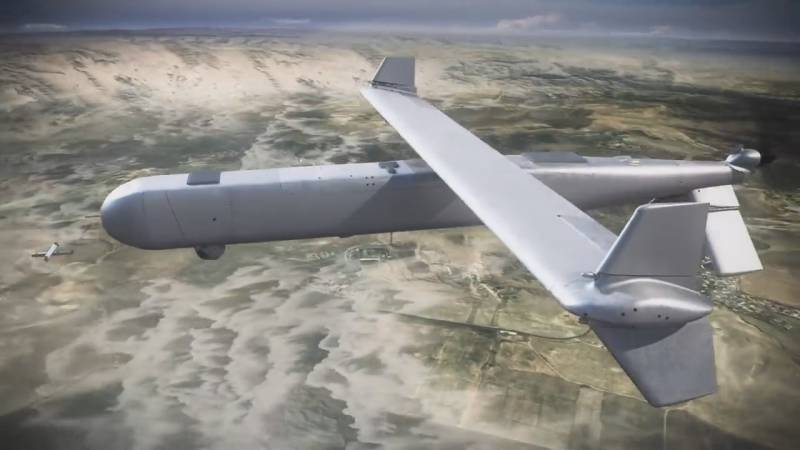
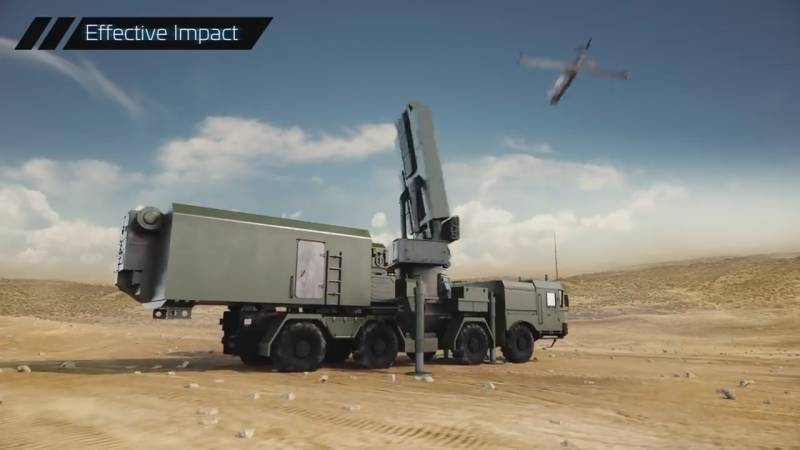
Information